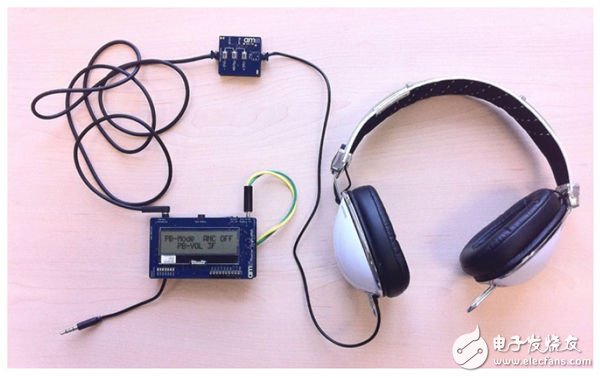What are the differences between digital vinyl sounds and sounds?
Active audio noise reduction technology is favored by consumers. So far, it is mainly used in independent active noise-cancelling headphones and headsets. Consumers want to enjoy music in a noisy environment, and are willing to buy headphones that can provide this function.
At present, mobile phone manufacturers are taking active noise reduction technology as a major differentiating advantage of their products, providing excellent audio experience in calls and media consumption. The most economical and convenient method of noise reduction is to have a noise reduction circuit built into the phone. But noise pickup must be implemented on the headset and not on the mobile phone, because the mobile phone may be placed in the user's pocket and may block the noise source.
This brings great difficulties: how to transmit the noise signal of the left and right channels from the headset to the mobile phone through the standard 3.5 mm audio interface, and at the same time return the noise reduction signal from the mobile phone to the headset. The standard analog audio interface generally has four channels. Two channels are used for left and right channel speakers, a microphone channel and ground. The microphone channel is also used to power the microphone. When making a call, the microphone transmits the voice signal to the mobile phone.
When the 3.5mm audio interface is used in the traditional analog mode, it is impossible to transmit the noise signals of the left and right channels from the headset to the mobile phone for processing. Austrian Microelectronics has developed a new digital multiplexing technology, in fact, it can create additional channels in the microphone channel. These channels can be used for noise reduction applications, and can transmit the sampling noise of two or four additional left and right channel microphones in the headset to the mobile phone.
In other applications, additional channels can be used for data communication with audio accessories at medium and low data rates, such as adding display functions to accessories, transmitting sensor data, or other additional functions. Of course, the traditional working mode of the audio interface will also be retained, so standard headphones that do not support enhanced features can still be used. This article describes how to achieve full-duplex data communication through the 3.5 mm audio interface.
Simultaneous voltage and current modulation
Digital microphones are now widely used to provide audio signals as a serial sigma-delta modulated bit rate stream based on an oversampling clock. This makes it possible to use multiplexed signal digital technology to provide full duplex communication. The challenge is to avoid interference between upstream and downstream signals on the same line, while providing a high enough bit rate to meet consumer demand for high sound quality. One possible technique is to use both voltage and current modulation techniques on the microphone channel: one provides the upstream signal, and the other provides the downstream signal.
In order to verify the effectiveness of this technology, Austrian Microelectronics has developed a complete demonstration system that includes noise reduction functions and can be connected to a mobile phone or MP3 player with a 3.5 mm audio interface. It provides about 2Mbit / s upstream signal and 12Mbit / s downstream signal.
The demonstration system consists of a main circuit and peripheral circuits (see Figures 1 and 2). (In the actual terminal product design, the main circuit is embedded in the mobile device, and the peripheral circuit is on the control part of the headset.)

Figure 1: Block diagram of a digital multiplexing demonstration system.

Figure 2: The demonstration system of Austrian Microelectronics shows the main circuit board (bottom), the peripheral circuit board (upper) with volume up, mode and volume down keys, and the headset.
The battery is connected to the main circuit board to provide independent power. The main circuit board supplies power to the slave circuit board through the microphone channel of the 3.5mm microphone interface, and transmits the modulated microphone signal at the same time. The main circuit board generates a synchronized clock, and the peripheral circuit board clock is synchronized with it.
PC Cable:MINI DIN,D-SUB,SCSI.The display connecting line includes the data cable connecting the host computer and the display screen, and the power cable connecting the power supply.
The common data cable types are: HDMI cable, VGA cable and DVI cable. There is also a DP cable for notebook!
PC Cable
PC Cable
ShenZhen Antenk Electronics Co,Ltd , https://www.antenk.com